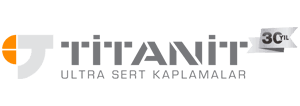What is PVD Coating?
The History of Physical Vapor Deposition (PVD)
Physical Vapor Deposition (PVD) methods are mainly based on the principle of accumulation, by evaporation and/or sputtering, of solid-state coating material on a base material.
The coating made by Faraday by evaporating a metal wire under vacuum in 1857 is accepted as the first PVD coating application. Optical properties examinations were performed with thin films produced by Kuntz with this method in 1888. The method was limited to physics studies for many years, but it started to become widespread when it was used on the cutting tool surfaces with the aim of delaying tool wear after the 1960s.
Solidification mechanisms of physic-chemistry rules are not valid in PVD coating methods. Moreover, materials coated in the way of thin films exhibit the elastic properties of the base material. Due to these reasons, it is possible to coat any material on almost any solid material.
